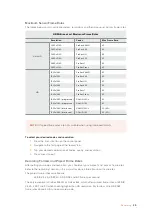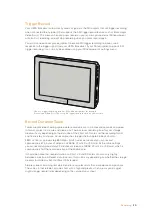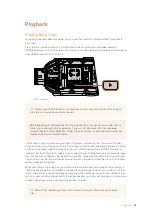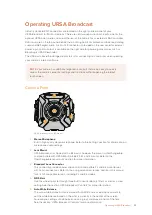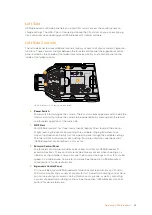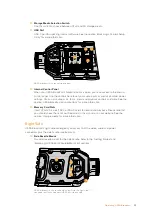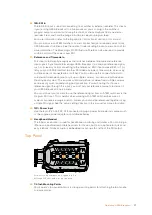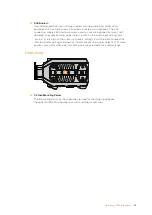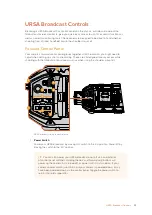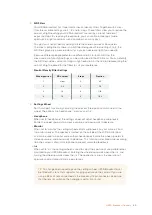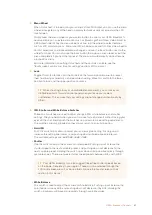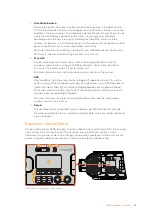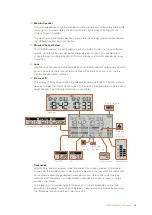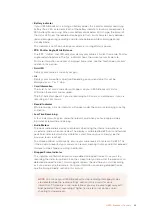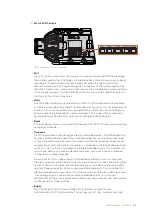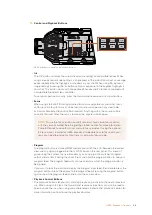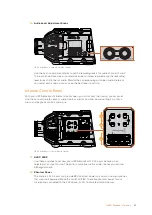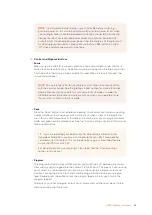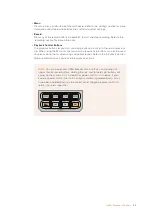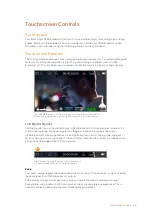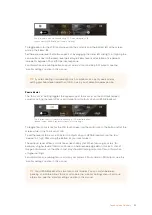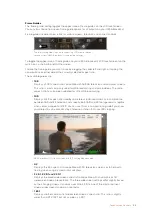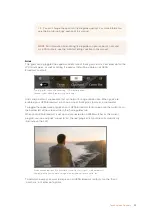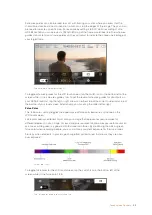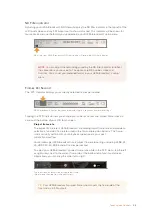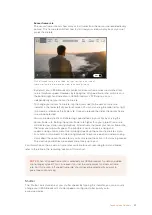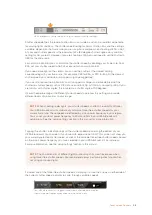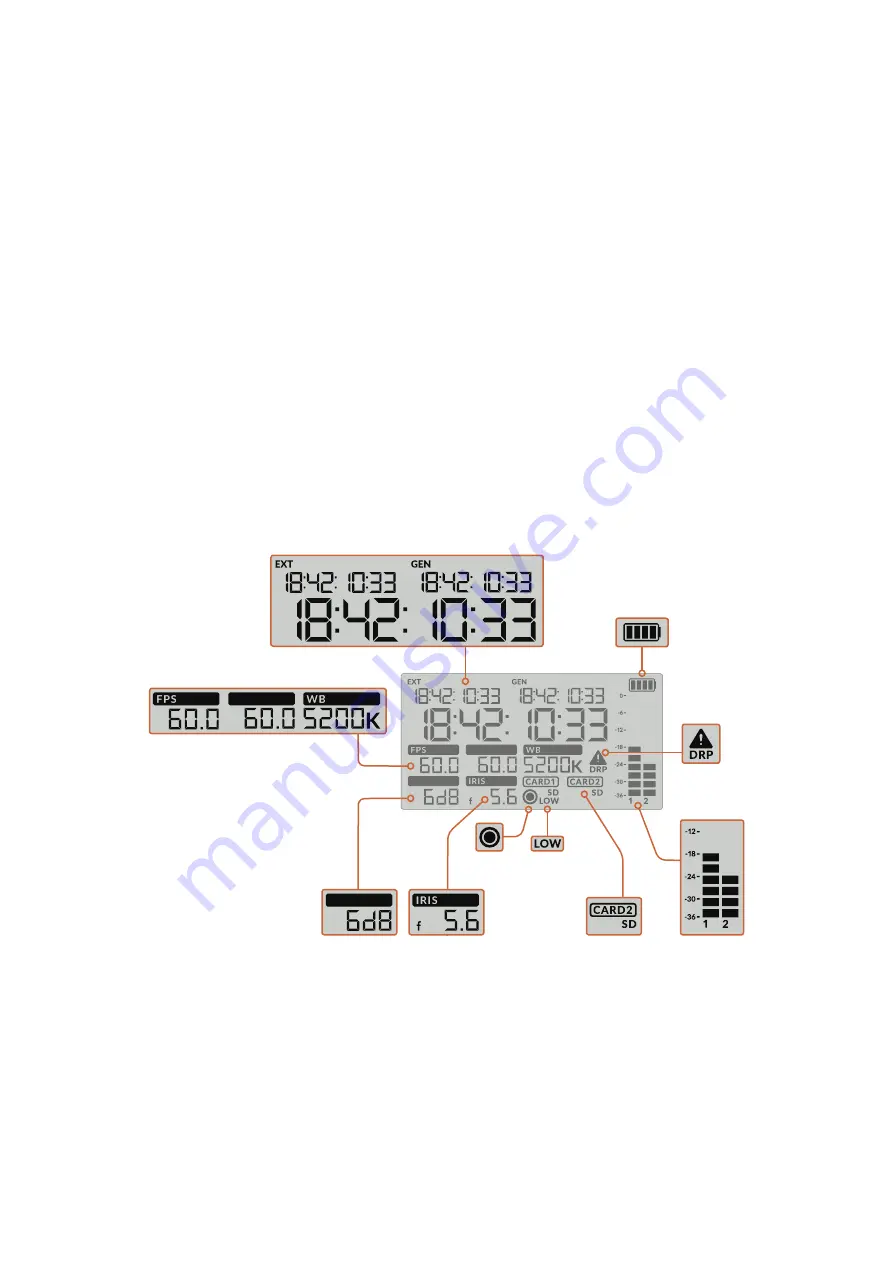
10
Monitor Speaker
The small speaker built into the outside control panel lets you listen to the audio while
shooting. It is located where your ear would normally be when shooting with the
camera on your shoulder.
To adjust the volume of the speaker, simply rotate the settings wheel as described in
the 'URSA Broadcast Controls' section.
11
Monitor Channel Select
Your URSA Broadcast currently supports two channels of audio. In a future software
update, up to four channels will be available, divided into pairs. You will be able to
choose the pair monitored by your LCD status display and monitor speaker by using
this switch.
12
Lock
Use this switch to lock all of the settings on your URSA Broadcast's ergonomic control
panel. The only controls that will remain active while the lock switch is 'on' are the
monitor channel select switches.
13
Status LCD
This display shows you your URSA Broadcast’s essential settings at a glance, without
needing to open the internal touchscreen. This screen is designed to be visible even in
bright daylight. The following information is available:
Timecodes
Your URSA Broadcast displays three timecodes. If you have an external timecode
connected, this will be shown under the 'ext' indicator in the top left of the status LCD.
Your camera's internally generated timecode is shown next to this under the 'gen'
indicator. Both the external and generated timecodes are shown in hours, minutes,
seconds and frames.
The larger, main timecode indicator displays your current timecode as either clip
duration or timecode. You can switch between these two display modes by pressing
the 'timecode' button underneath the status LCD.
SHUTTER
ISO
Battery indicator
Audio meters
Card indicator
Iris
Low record
time remaining
FPS, Shutter Speed, White Balance
Record
indicator
Timecodes
SHUTTER
ISO
SHUTTER
ISO
SHUTTER
ISO
SHUTTER
ISO
SHUTTER
ISO
SHUTTER
ISO
SHUTTER
ISO
Gain/ISO
SHUTTER
ISO
Dropped
frame
indicator
SHUTTER
ISO
SHUTTER
ISO
43
URSA Broadcast Controls

